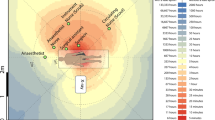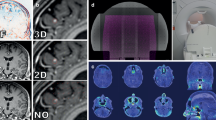Abstract
Short and semi-automated quality assurance (QA) programs are becoming one of the most popular and highly demanding tasks in radiotherapy. The current research investigates the accuracy of a four degrees of freedom (4DoF) medical linear accelerator couch positioning with a fast and accurate method based on images acquired using an electronic portal imaging device (EPID). An accurate EPID QA phantom and a proper in-house code were used. A Siemens medical linear accelerator equipped with an a-Si EPID was used to acquire portal images. For verifying the mechanical performance of the EPID positioning, EPID sensitivity, and accuracy of the code response from the image processing point of view were investigated. To characterize the results, three deviations in the phantom positioning were deliberately created. The translational and rotational displacements of the treatment couch were then evaluated. The loading effect on the treatment couch was then investigated. The results of prerequisite tests, including the mechanical performance of the EPID, and the sensitivity and accuracy of the recognition codes, were assessed. The results were found to be within the tolerance range reported at AAPM TG-142. The mean deviations of the tests between expected and measured displacements by 4DoF treatment couch were found to be 0.13° ± 0.11°, 0.12 ± 0.17 mm, 0.17 ± 0.13 mm, and 0.04 ± 0.09 mm for rotational, longitudinal, lateral, and vertical shifts, respectively. The results showed that the proposed method is a reliable and fast approach to find the uncertainties occurring intreatment couch positioning.


Similar content being viewed by others
References
Verellen D, De Ridder M, Linthout N, Tournel K, Soete G, Storme G. Innovations in image-guided radiotherapy. Nat Rev Cancer. 2007;7:949.
Schwarz M, Giske K, Stoll A, Nill S, Huber PE, Debus J, et al. IGRT versus non-IGRT for postoperative head-and-neck IMRT patients: dosimetric consequences arising from a PTV margin reduction. Radiat Oncol. 2012;7:133.
Sandler HM, Liu P-Y, Dunn RL, Khan DC, Tropper SE, Sanda MG, et al. Reduction in patient-reported acute morbidity in prostate cancer patients treated with 81-Gy Intensity-modulated radiotherapy using reduced planning target volume margins and electromagnetic tracking: assessing the impact of margin reduction study. Urology. 2010;75:1004–8.
Molinelli S, de Pooter J, Romero AM, Wunderink W, Cattaneo M, Calandrino R, et al. Simultaneous tumour dose escalation and liver sparing in stereotactic body radiation therapy (SBRT) for liver tumours due to CTV-to-PTV margin reduction. Radiother Oncol. 2008;87:432–8.
Hyer DE, Mart CJ, Nixon E. Development and implementation of an EPID-based method for localizing isocenter. J Appl Clin Med Phys. 2012;13:72–81.
Hammoud R, Patel SH, Pradhan D, Kim J, Guan H, Li S, et al. Examining margin reduction and its impact on dose distribution for prostate cancer patients undergoing daily cone-beam computed tomography. Int J Radiat Oncol Biol Phys. 2008;71:265–73.
Klein EE, Hanley J, Bayouth J, Yin FF, Simon W, Dresser S, et al. Task Group 142 report: quality assurance of medical accelerators. Med Phys. 2009;36:4197–212.
Kutcher GJ, Coia L, Gillin M, Hanson WF, Leibel S, Morton RJ, et al. Comprehensive QA for radiation oncology: report of AAPM radiation therapy committee task group 40. Med Phys. 1994;21:581–618.
Ébastien Clippe S, Sarrut D, Malet C, Miguet S, Ginestet C, Carrie C. Patient setup error measurement using 3D intensity-based image registration techniques. Int J Radiat Oncol Biol Phys. 2003;56:259–65.
Wilbert J, Guckenberger M, Polat B, Sauer O, Vogele M, Flentje M, et al. Semi-robotic 6 degree of freedom positioning for intracranial high precision radiotherapy; first phantom and clinical results. Radiat Oncol. 2010;5:42.
Takemura A, Ueda S, Noto K, Kojima H, Isomura N. Comparison of the motion accuracy of a six degrees of freedom radiotherapy couch with and without weights. Int J Med Phys Clin Eng Radiat Oncol. 2013;2:69.
Schmidhalter D, Fix M, Wyss M, Schaer N, Munro P, Scheib S, et al. Evaluation of a new six degrees of freedom couch for radiation therapy. Med Phys. 2013;40:111710.
Dhabaan A, Schreibmann E, Siddiqi A, Elder E, Fox T, Ogunleye T, et al. Six degrees of freedom CBCT-based positioning for intracranial targets treated with frameless stereotactic radiosurgery. J Appl Clin Med Phys. 2012;13:215–25.
Rowshanfarzad P, Sabet M, O'Connor DJ, McCowan PM, McCurdy B, Greer PB. Detection and correction for EPID and gantry sag during arc delivery using cine EPID imaging. Med Phys. 2012;39:623–35.
Yousif Y, Van Rensburg A. Performance evaluation of the siemens electronic portal imaging device for IMRT plan verification. Int J Med Phys Clin Eng Radiat Oncol. 2015;4:215.
Murthy KK, Al-Rahbi Z, Sivakumar S, Davis C, Ravichandran R, El Ghamrawy K. Verification of setup errors in external beam radiation therapy using electronic portal imaging. J Med Phys/Assoc Med Physicists India. 2008;33:49.
Das IJ, Cao M, Cheng CW, Misic V, Scheuring K, Schüle E, et al. A quality assurance phantom for electronic portal imaging devices. J Appl Clin Med Phys. 2011;12:391–403.
Pesznyák C, Polgár I, Weisz C, Király R, Zaránd P. Verification of quality parameters for portal images in radiotherapy. Radiol Oncol. 2011;45:68–74.
Misiarz A, Krawczyk P, Swat K, Andrasiak M. Assessment of the influence of a carbon fiber tabletop on portal imaging. Nucl Instrum Methods Phys Res Sect A. 2013;714:53–7.
Pesznyák C, Fekete G, Mózes Á, Kiss B, Király R, Polgár I, et al. Quality control of portal imaging with PTW EPID QC phantom®. Strahlenther Onkol. 2009;185:56–60.
Funding
None.
Author information
Authors and Affiliations
Corresponding author
Ethics declarations
Conflict of interest
Azam Afzalifar declares that she has no conflict of interest. Ali Asghar Mowlavi declares that he has no conflict of interest. Mohammad Mohammadi declares that he has no conflict of interest.
Ethical approval
This article does not contain any studies with human participants or animals performed by any of the authors.
Informed consent
None.
Additional information
Publisher's Note
Springer Nature remains neutral with regard to jurisdictional claims in published maps and institutional affiliations.
About this article
Cite this article
Afzalifar, A., Mowlavi, A.A. & Mohammadi, M. Performance of a linear accelerator couch positioning quality control task using an electronic portal imaging device. Radiol Phys Technol 13, 195–200 (2020). https://doi.org/10.1007/s12194-020-00557-4
Received:
Revised:
Accepted:
Published:
Issue Date:
DOI: https://doi.org/10.1007/s12194-020-00557-4




